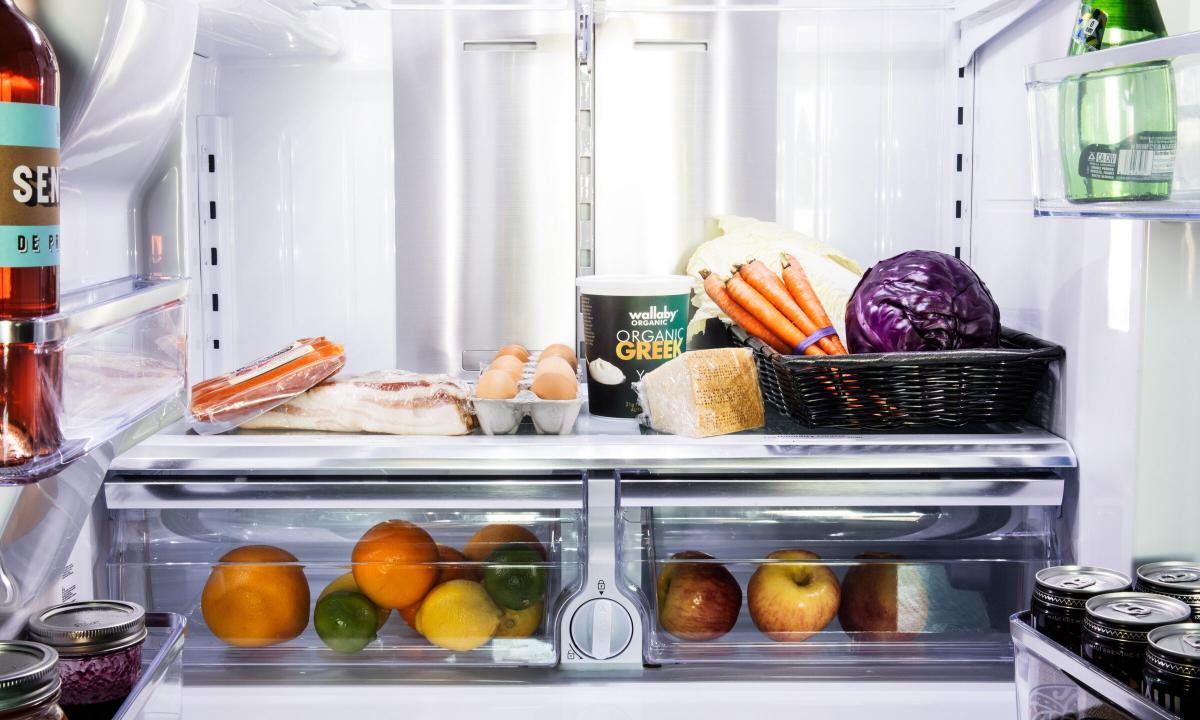food depends not only on what we eat, but also from what quality we eat products. According to researches, the average inhabitant of Europe and America throws out about 100 kg. products in a year because of the wrong storage in the fridge.
People go to shop, buy food, bring home, put in the fridge … and throw out because their period of storage came to an end. It not only expenditure of your money, but waste of work of people which grew up this product prepared and packed for you and also expenditure of natural resources. There are some measures which cut down quantity of the thrown-out food. Here a little from them:
- Dairy products.
It is the best of all to store cheese in the bottom of the fridge – he does not love sharp temperature drops. That cheese did not dry, wrap it properly in a film or in wax paper. That milk and cream were longer stored, can add to them a salt pinch. You do not hold milk on a fridge door – at opening closing there are temperature drops. It is better to freeze oil.
- Apples.
Do not store apples in the fridge! They emit gas ethylene which promotes fast damage of the next products. You store apples in paper, in the dry and cool place.
- Plastic – a damage source.
Plastic not only destroys the environment, but also promotes fast damage of products. It does not allow moisture to evaporate and forms condensate inside. It is better to shift cottage cheese and sour cream in the enameled or glass capacity.
- Freezing.
If you bought too many products and are not sure that you use them in time, put them in the freezer better. And though products will lose a part of the vitamins, at least, you will not throw out them. Sign each product, specify date of freezing and use for 6 months. Tomatoes can also be frozen, only after a defrosting they lose the structure and creep away. They can be used in ragout, soups and sauces.
- Grain.
Grain can be spoiled as a result of contact with water molecules. When you cook something or boil a teapot, molecules of water extend on all kitchen and are absorbed in dry objects. Therefore it is important to pour grain into the closed tanks. You store them far away from a plate and a sink.
- Greens (parsley, fennel).
Greens should be stored in slightly damp paper towel in not closed plastic bag. Also it can be placed in "vase", roots have to be in water, and leaflets should be covered with a plastic bag.
- Tomatoes and basil.
Tomatoes and basil do not love cold, it is the best of all to store them in the dry, warm place. The basil should be put in a vase and to cover with a plastic bag.
- Cabbage.
It is the best of all not to cut cabbage entirely (later it dries and grows mouldy), and to tear off leaves and to cut already them (remove two top leaves from cabbage, we use them as a protective sack at the end, remove further so many sheets how many it is necessary for you, at the end wrap the lost weight head of cabbage in those two leaves). So it is stored much longer.
- Bananas and pineapples.
You do not store bananas and pineapples in the fridge. They do not transfer cold.
- Avocado.
If you bought unripe avocado, it is necessary to store it out of the fridge at the room temperature for ripening. If you bought ripe – can safely put in the fridge.
- Citrus, grenades and persimmon.
Citrus, grenades and persimmon do not love the fridge – at low temperatures they emit hazardous substances and rot.
